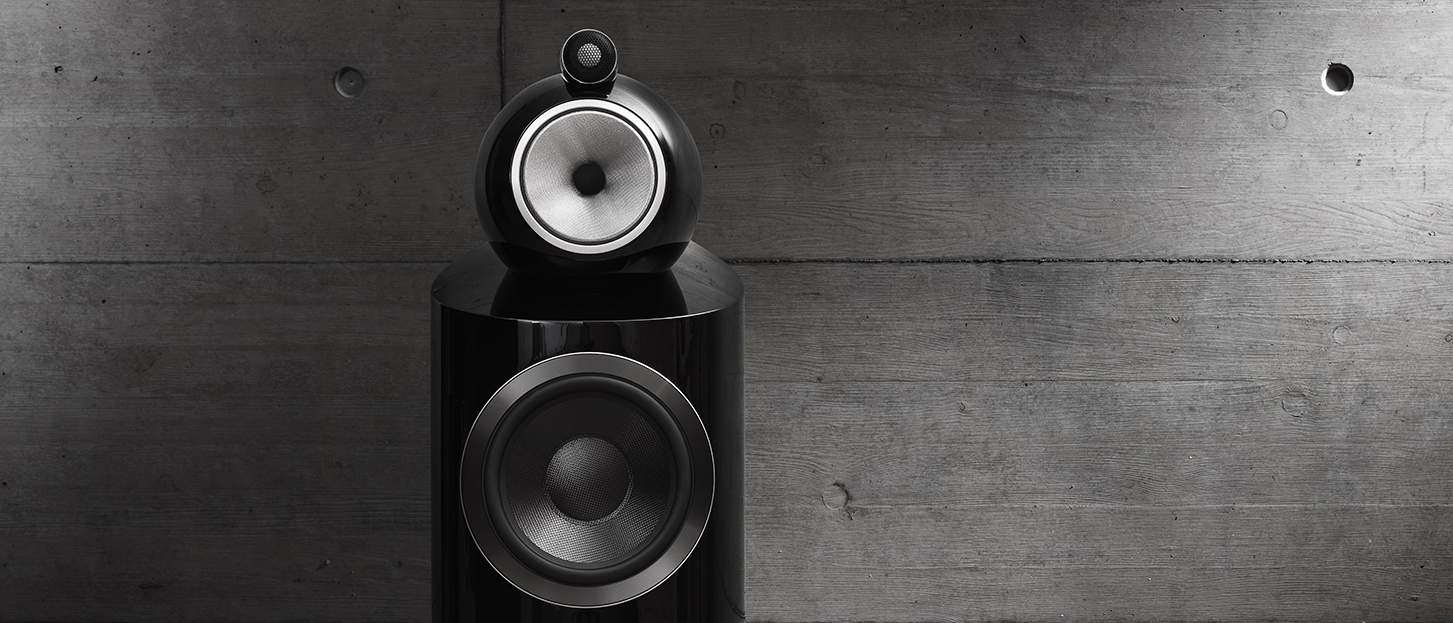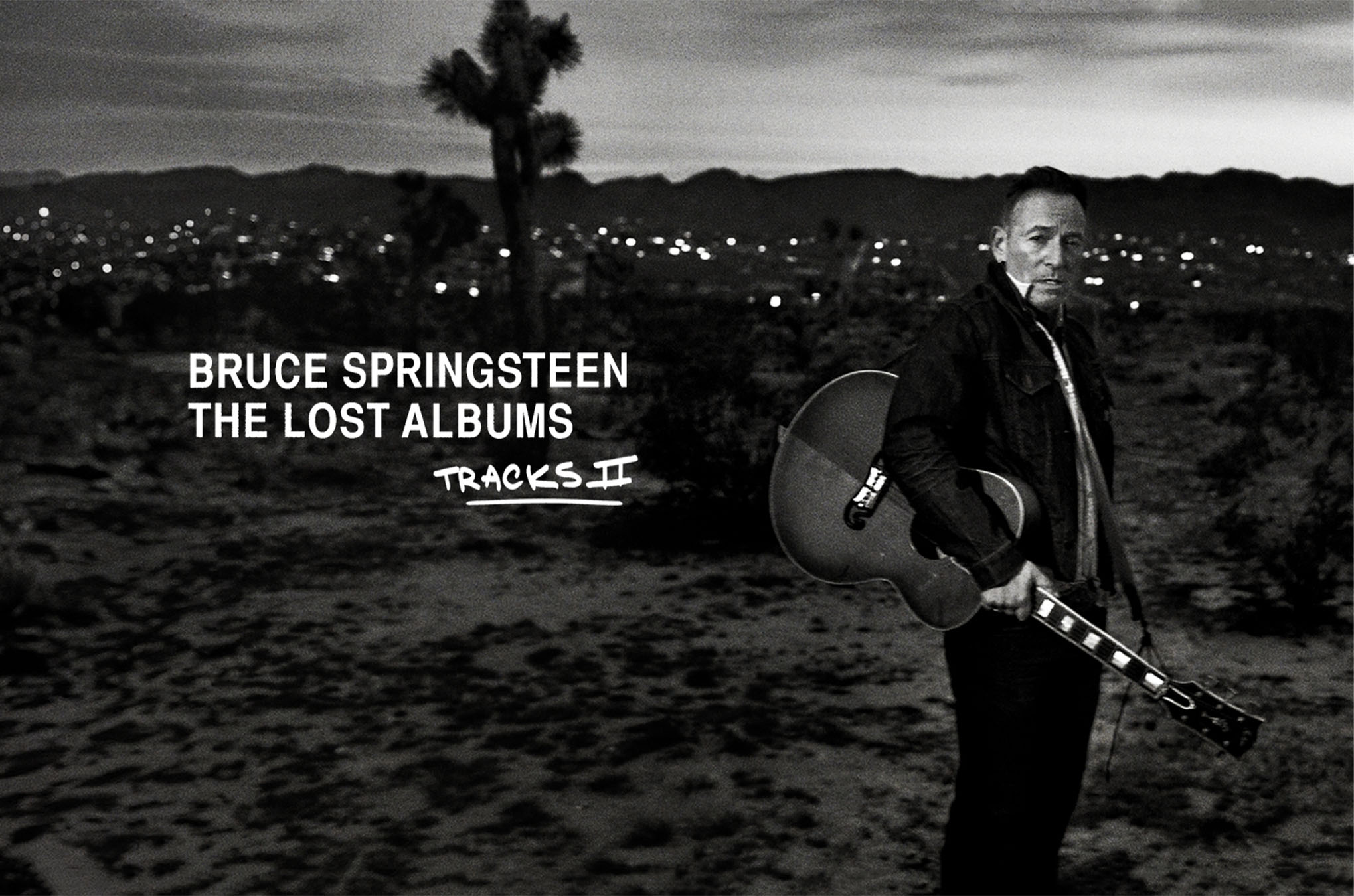What Hi-Fi? Verdict
If you have been waiting for this new version you've done the right thing, because B&W has significantly improved it
Pros
- +
Fabulous bass
- +
Airy, natural sound
- +
Superb high frequencies
Cons
- -
Aluminium spine
- -
Speaker terminal
Why you can trust What Hi-Fi?
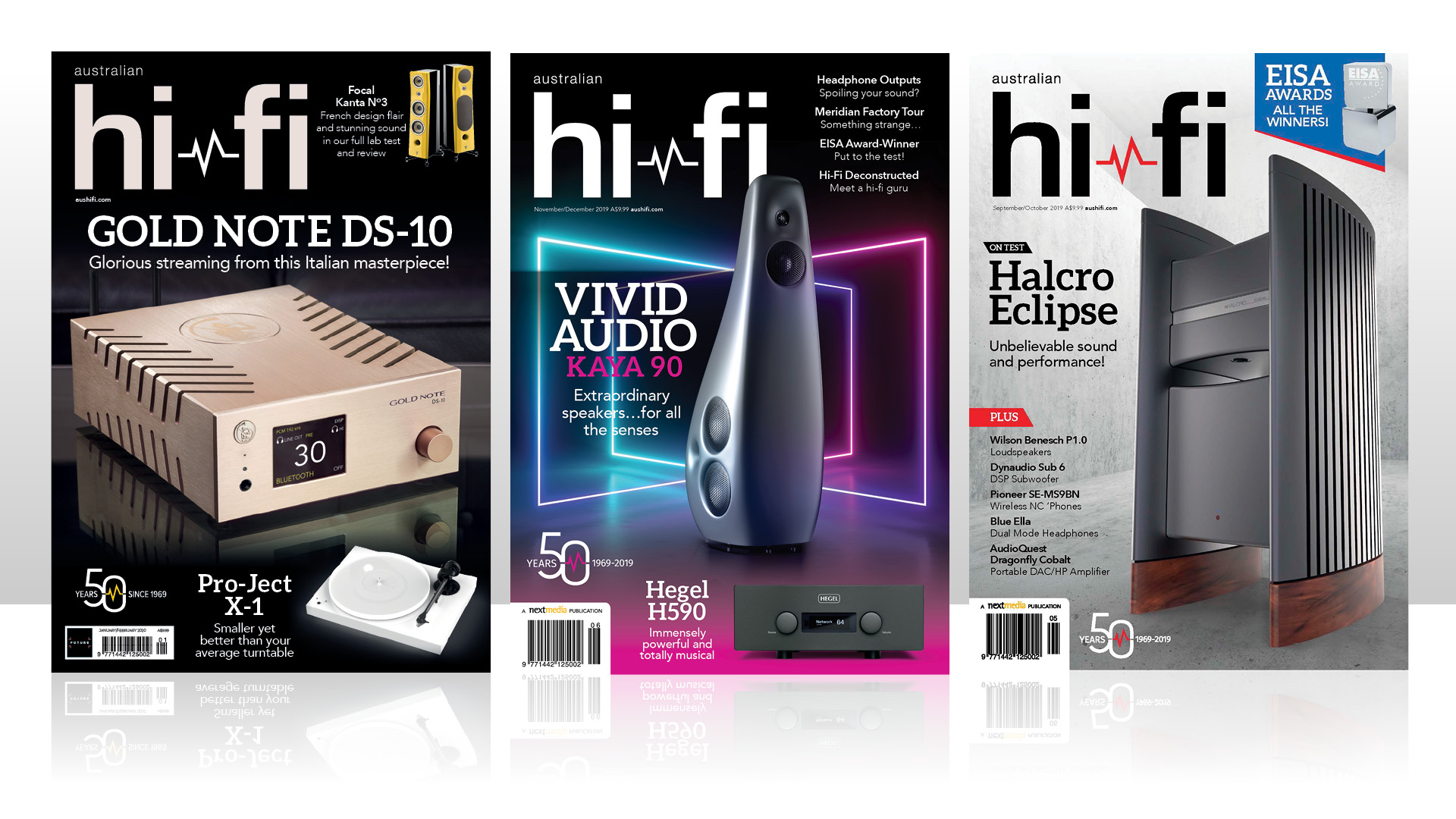
This review and test originally appeared in the Sep/Oct 2018 issue of Australian Hi-Fi magazine, one of What Hi-Fi?’s sister titles from Down Under. Click here for more information about Australian Hi-Fi, including details on how to subscribe. [For Australian availability of this product, please see the B&W website.]
The B&W 800 D3 represents a landmark in the company’s history, because it was specifically created to celebrate B&W’s 50th anniversary. As such, I expected to find some gold used in the 800 D3, this being the precious metal most-often used to celebrate 50th anniversaries in most countries around the world. B&W has instead used diamond, a material more commonly reserved for 60th anniversaries. To be more specific, the dome of the 800 D3’s tweeter is made of diamond, which you’d have to agree is quite a step up in materials science from the cloth and base metal domes that are usually used to build tweeters… and by ‘base’ metals,
I mean aluminium, titanium and beryllium.
Using a dome made from diamond is not without its costs, and the first cost is simply that: they’re expensive! They’re so expensive that even B&W can’t afford to damage one. In fact, to minimise the possibility of damage, they are not even installed in the cabinet until the absolute last minute… just prior to each speaker being individually measured before being placed in its shipping carton.
Another cost of using a dome made from diamond is that—rather counter-intuitively, diamond being the hardest mineral known to mankind—the diamond dome is actually quite fragile, so to prevent it being accidentally damaged, B&W protects it with a grille mesh that very slightly affects its frequency response and reduces its efficiency. B&W is continually improving this grille to make it ever-more acoustically transparent, in order that it has less effect on the sound waves that must pass through it. The latest incarnation of the grille has a mesh grid that looks a little like one of Buckminster Fuller’s geodesic domes, with myriad interlinked triangles. The dome is removable, but has a childproof locking system, so a special tool is required to remove it.
A further ‘cost’ of using diamond as a dome material is that it’s heavier than fabric or metal, which means it’s more difficult to drive, and somewhat less efficient as a result. B&W gets around this issue by using four magnets, rather than just one, to drive the dome. B&W claims an increase in efficiency of around 2dB. To keep these four magnets cool—so they maintain their efficiency—the tube in which the tweeter is housed (about which more in a moment) is made from aluminium alloy, so the whole surface acts as a heatsink as well as an ‘enclosure’.
Given all the foregoing drawbacks, one might be forgiven for asking why B&W uses diamond domes at all. The reason is that diamond has a hardness factor of 10 on the Mohs scale, which means that whereas most other tweeters enter their ‘break-up’ mode well below 50kHz (and some do so below 20kHz, so within the audio band itself!) B&W’s diamond tweeter does not enter its ‘break-up’ mode until a frequency of nearly 70kHz. The result is that the dome is completely rigid, exhibiting perfect piston-like behaviour not only within the audio band, but also for at least an octave above it, and delivers superior sound quality as a direct result. (By way of comparison, aluminium rates only a ‘3’ on the Mohs scale, and beryllium scores only a ‘5.5’.)
There is one other problem with using a hard dome in a tweeter, and that is the problem of getting rid of pressure waves from the back of the dome. Whereas the pressure waves at the front of the dome that are caused by the dome’s forward and backwards movement are what we perceive as sound, the corresponding waves issuing from the back of the dome interfere with sound quality. Some manufacturers don’t address this issue at all, while some others use a damper or disperser immediately behind the dome. B&W uses a rather elegant acoustic construction that extracts unwanted energy from the rear of the diaphragm by moving it away to be dissipated inaudibly as it moves down the tube, with the different frequencies being absorbed at different distances down the tube (which requires a fairly long tube). This technique is what B&W refers to as its ‘Nautilus’ technology. As you can see from the 800 D3, the tweeter is mounted in its own ‘Nautilus’ enclosure at the top of the cabinet. This enclosure is vibrationally isolated from the ‘head’ that contains the midrange driver, and this ‘head’ is in turn isolated from the main cabinet that contains the two bass drivers, so that cabinet vibration cannot adversely affect the motion of the midrange or tweeter diaphragms
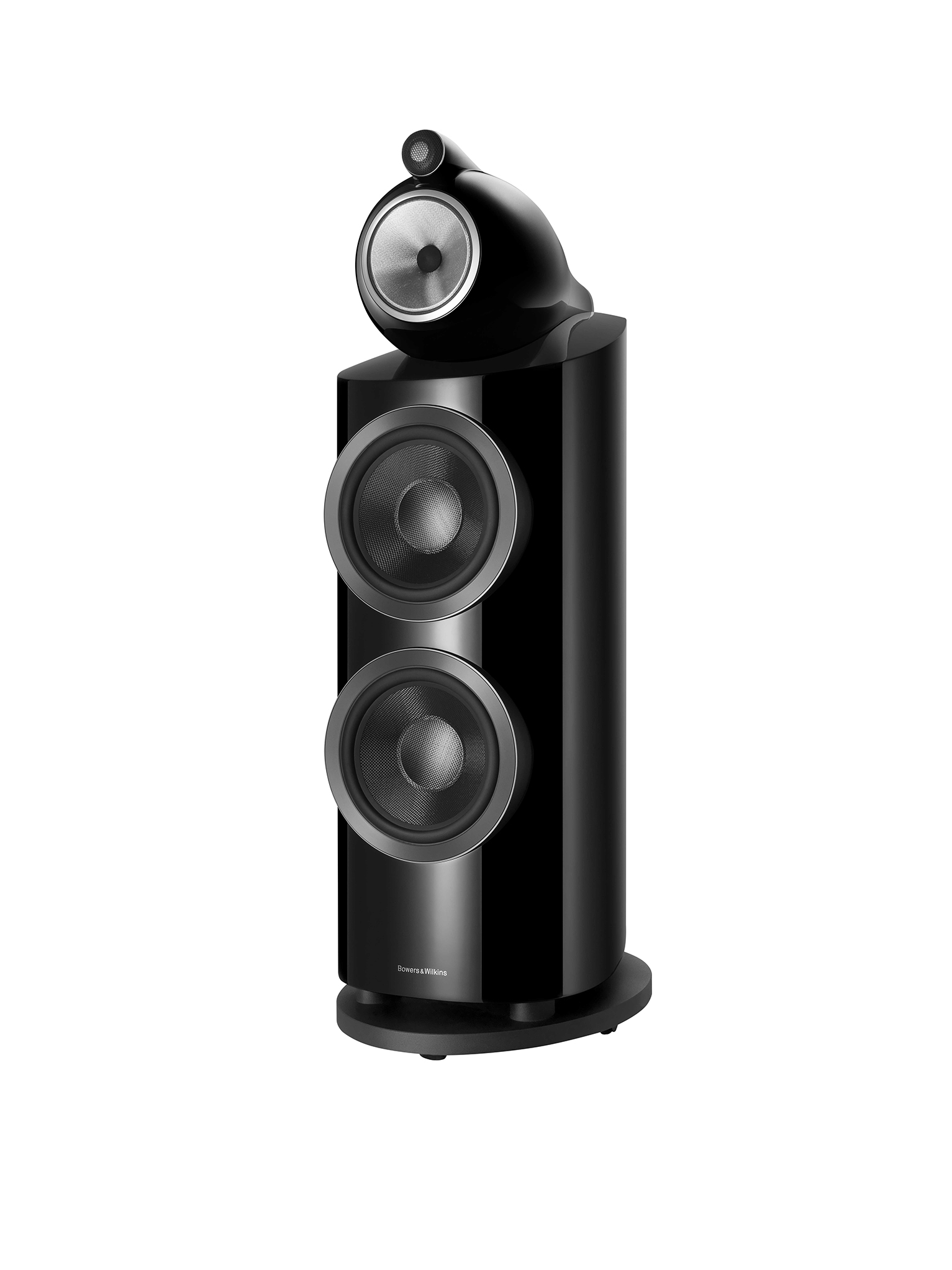
As mentioned in the previous paragraph, the midrange driver of the B&W 800 D3 is contained in its own sub-enclosure, and this also has a Nautilus tube to absorb the unwanted pressure wave from the rear of the midrange cone. This cone, which is 150mm in diameter, is unlike almost all other midrange cones ever made in that it does not have a roll surround around its periphery to assist with cone movement. Instead it uses a ‘suspension’ system B&W has been using for some years now, which it calls a ‘fixed suspension’, and the drivers that use it ‘Fixed Suspension Transducers’ or ‘FST’ drivers. In reality, the suspension is not ‘fixed’ at all, but instead of connecting to a flexible ring of rubber or foam that moves up and down along with the cone, the cone is instead terminated by a very narrow polymer ring that stretches to accommodate the cone’s movement. This trick is made possible because B&W’s FST drivers operate only over a very narrow band of frequencies that do not require much in the way of cone movement. The advantages are claimed to be improved transient response, improved damping and reduced distortion (this last because the foam ring does not reflect energy back across the cone surface in the same manner as a roll sound). B&W also says that this suspension improves the high-frequency response, so the crossover point to the tweeter can be at a higher frequency than it would otherwise have to be.
The midrange cone is made from a material that B&W calls ‘Continuum’ that’s said to have a ‘unique composite construction’ and first appeared on the 802 D3. Continuum must be superior to Kevlar as a cone material, because B&W itself previously used Kevlar in this application. The sub-enclosure in which it’s housed is made from a fibre-glass-like composite B&W calls ‘Marlan’. The tear-drop shape means there are no reflections added to the direct sound, which enables improved imaging.
Eliminating reflections and diffractions is one of the reasons the main cabinet of the 800 D3 is curved. When a bass driver is mounted on a standard flat baffle its performance is severely affected by that baffle. Yet, in the main, manufacturers continue to use flat baffles… primarily, it must be said, because it’s so difficult to physically mount a driver on a non-flat surface. B&W has solved the mounting problem by fixing both the bass drivers in the 800 D3 to aluminium tubes that protrude through the baffle.
From an engineering viewpoint, this is expensive and difficult. From a visual viewpoint the appearance will be in the eyes of the beholder. I really like the look of the protruding drivers, but several others whose opinion I asked did not share my opinion. If you don’t share my opinion either, B&W supplies a black cloth grille that will hide both bass drivers and another—separate—grille to hide the midrange driver from sight.
As for those bass drivers, B&W has also upgraded the material from which they’re made. Whereas B&W previously used a material called Rohacell to make the cones in its flagship designs, it now uses a material it calls ‘Aerofoil’. Since the word aerofoil is already in use to describe the cross-sectional shape of an object that when moved through the air creates an aerodynamic force (i.e. the blade of a helicopter) it seemed odd to me that B&W would use the same word to describe a material. However, we do know that the construction of the cone is very similar to that of B&W’s Rohacell cones, which sandwich a hard foam core between two skins of woven carbon-fibre.
However, unlike the Rohacell driver, whose foam core is the same thickness everywhere across the cone, the core in the ‘Aerofoil’ cone is not constant over the cone’s diameter, but varies depending on the distance from the point at which it attaches to the voice coil former. Because of this, and the name, it’s not too much of a stretch to imagine that the shape of the core in the ‘aerofoil’ driver is not dissimilar to that of an aerofoil: flat on one side, bulging on the other, and thinning at both ends.
Although B&W specifies bass cone diameter at 250mm, this is the mounting hole diameter: the diameter of the moving part of the cone is only 228mm, and the Thiele/Small diameter is 215mm. This puts the cone area (Sd) of each driver at 363cm², for a total cone area of 726cm², so that if B&W had used a single bass driver, it would have had to have had an overall diameter of around 340mm in order to deliver the same amount of bass.
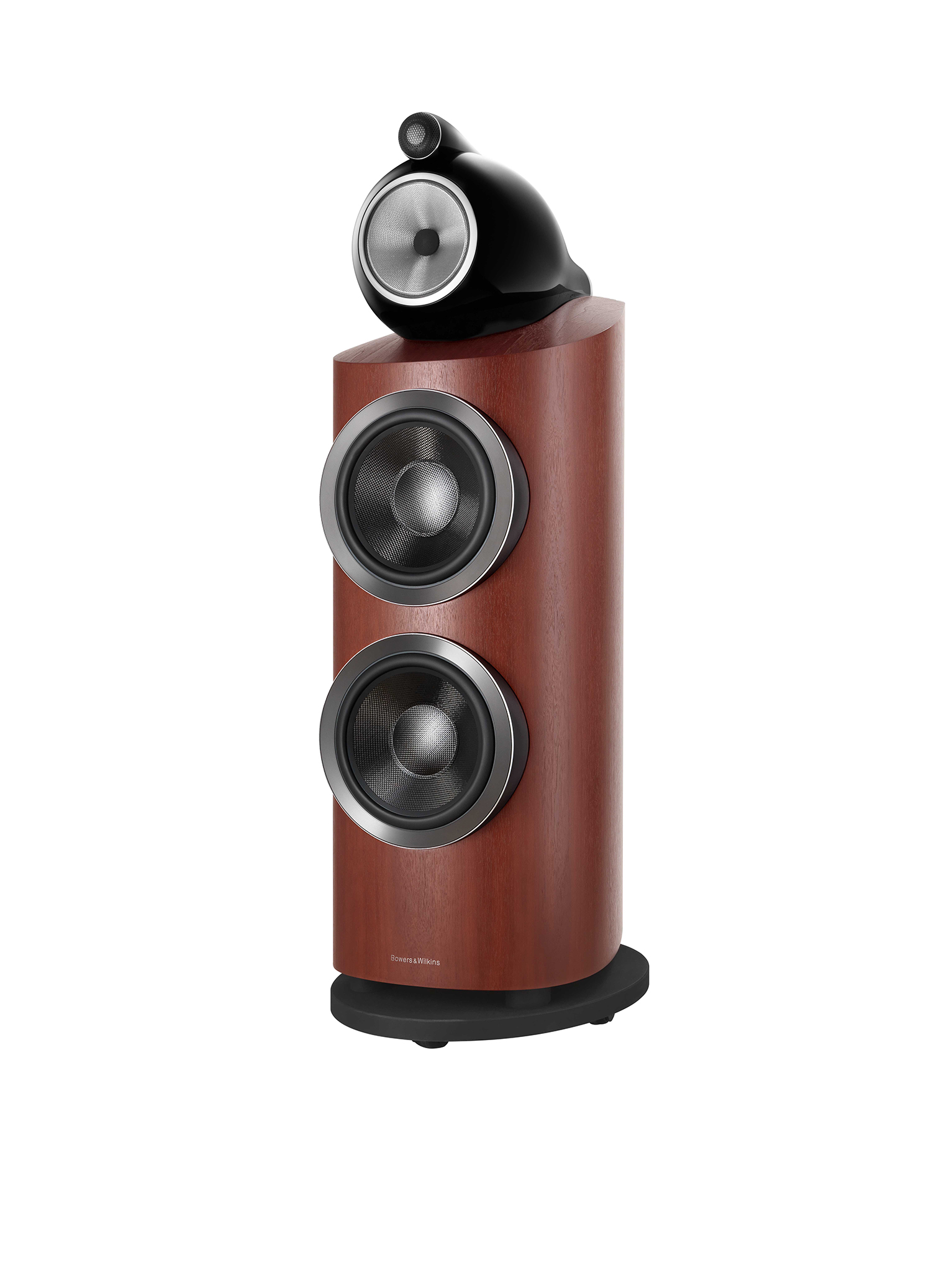
The 800 D3 is a vented-box design, with the bass reflex port located underneath the cabinet, which is my favourite location, as it means the room is loaded equally, which doesn’t happen when a port is located on the front or rear of the cabinet. The port itself is B&W’s ‘Flowport’ design, so-named because the surface of the port is dimpled—much like a golf ball—to ensure a smooth flow of air through it. Unlike most down-firing ports, whose performance is affected by the surface on which the loudspeakers stand, B&W’s port ‘fires’ down into the top of the base of the speaker, so dispersion is completely controlled, no matter whether your floor is made of stone, ceramic, wood or carpet.
The cabinet itself, apart from being curved internally, is also filled internally with criss-crossed ply/alloy braces to prevent cabinet vibrations and inhibit standing waves… a system B&W calls ‘Matrix’ bracing that it has been developing for many years, this latest iteration being its ‘Optimised Matrix.’ Unlike many curved cabinets, the 800 D3 is a stressed design, so B&W has to use an alloy beam at the rear to contain the stresses. I found this silver beam an unwelcome visual contrast with the Rosenut finish on my sample (I would have preferred a black alloy strut with the Rosenut finish) but that’s really a personal call (beauty being in the eye of the beholder, after all), and since it’s around the back of the speaker, I actually couldn’t see the beam at all from my listening position. But I do think that the silvery colour would better-suit the 800 D3 in its ‘Satin White’ finish. (A Gloss Black finish is also available.)
There are four gold-plated multi-way speaker terminals on the rear of the cabinet. The centre two connect to the midrange driver and tweeter and the outer two to the bass drivers to permit bi-wiring or biamping.
B&W provides short wire links to connect the two sections for those using only a single set of speaker cables. The ‘heads’ of the screw-on connectors are rounded, which makes them difficult to tighten, something I found even more difficult because they didn’t seem to twist smoothly down the post threads, so B&W should talk to its supplier about improving its machining standards.
As for their size, I assume that you’ve already assumed that the 800 D3 cabinets are big, and you’d be right, with each one measuring 1217×413×611mm (HWD).
Whatever you pay for a pair of B&W 800 D3s, the price will include a life-time of free hi-res downloads from B&W. This means that if you buy a pair of B&W 800 D3s you automatically qualify for a life-time membership to B&W’s ‘Society of Sound’ which means you can download hi-res albums and tracks from B&W’s website for free and ‘forever’. The only trick to this is that every time B&W loads a new album to its download site, it also removes one, which is presumably part of its licensing agreement. So to get maximum benefit from membership, you need to download at least two albums every month, which could be annoying to keep remembering to do, but is certainly a clever ploy to keep you involved with the B&W brand!
Listening sessions
First-off, I have to say that in a review of B&W’s slightly smaller 802 D3s that I wrote fairly quickly as a direct result of first hearing them, I was so smitten by their sound quality and their overall performance that I failed to emphasise one aspect of their design that I absolutely loved and also found immensely practical in day-to-day use. Since that same design feature is also found on the 800 D3s, I will use this review to redeem myself. The design feature to which I refer is simply the fact that these B&W speakers are fitted with wheels (or, if you prefer a more scientifically accurate term, ‘castors’), so they can be moved really easily. They’re also so heavy (96kg per cabinet) that I could hear no difference in sound quality between listening to them whilst on their castors and when listening when they were spiked. The castors make it really—and I mean really!—easy to position the speakers out of the way whenever you’re not listening to them, and wheel them out into the optimum position when you are.
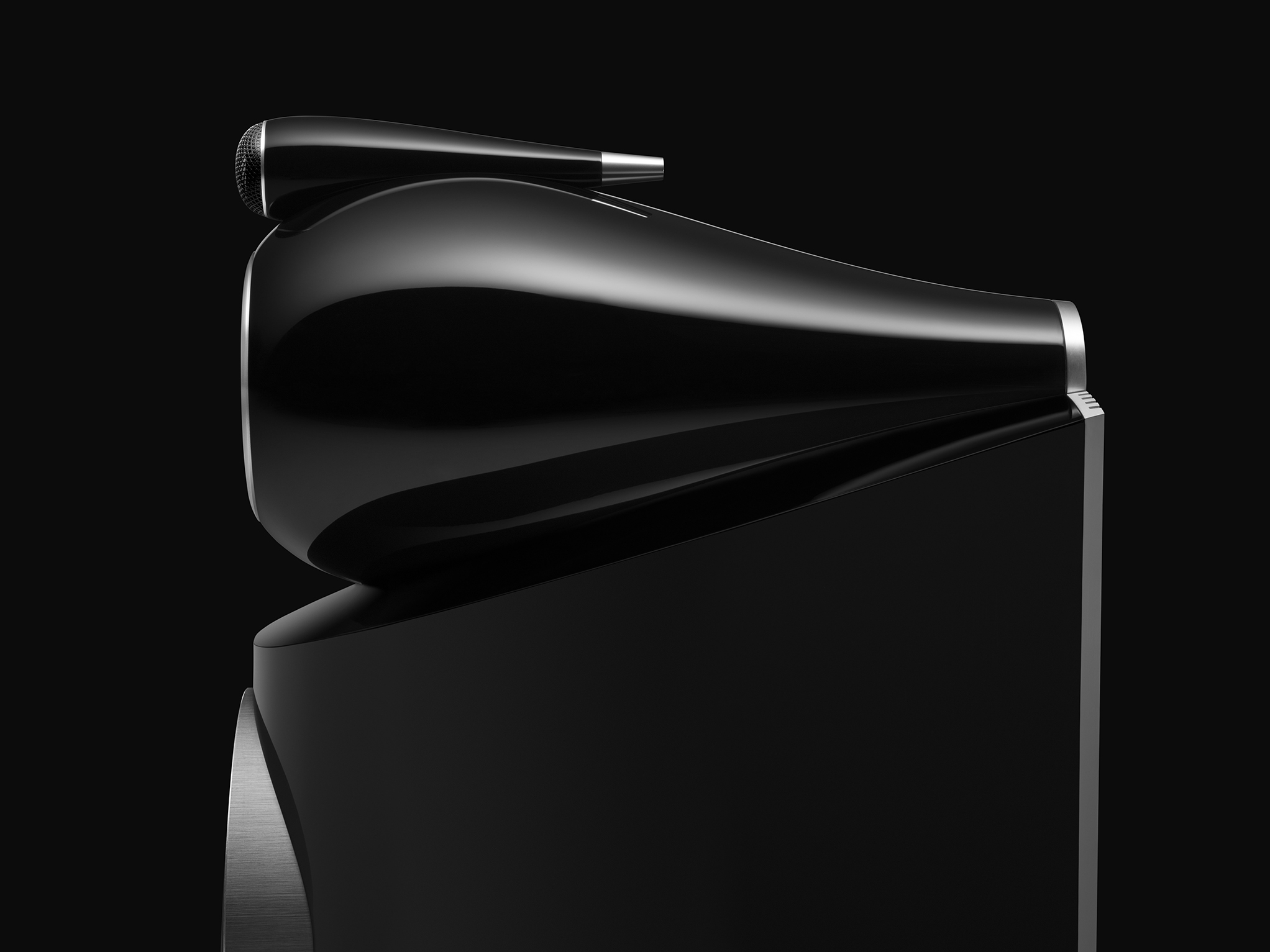
If you find you do prefer the sound when the speakers are on spikes (note that your ability to hear a difference might depend on the floor surface on which the speakers are standing), you will appreciate B&W’s spike design too, because after you’ve wheeled the speakers into the position where they sound the best, all you need to do to raise them on their spikes is reach underneath and spin three sprockets that in turn force the spikes down onto the floor, simultaneously raising the castors so they don’t touch the floor. And if you don’t want the spikes to damage your floor, you can place ‘spike cups’ underneath each spike. You don’t have to buy these from a furniture shop either: B&W supplies them with each pair of speakers, in fact they’re not only supplied—B&W has cleverly integrated these spike cups into the cabinet design so they’re stored underneath the cabinet whenever you’re not using them, making them impossible to accidentally misplace.
When I first fired up the B&W 800 D3s I was already anticipating that the gloriously spine-tingling high-frequency sound of the diamond tweeter would grab my attention, as it always has when I’ve auditioned B&W models using it on previous occasions. So I was shocked to find that with the B&W 800 D3s this was most definitely not the case.
What grabbed my attention the instant the music started was that I was suddenly no longer in my own listening room, but in a concert hall. It was as if the acoustic characteristics of my room had changed, so that my overwhelming impression was of having a sense of their being a huge space. Just as in a concert hall, even before the music starts, you can ‘hear’ the size of the hall you’re in, with the B&W 800 D3s, I was hearing that size… the music was no longer constrained to the physical dimensions of my listening room. This is the first time I’ve experienced this sense of space so acutely. Then there was the glorious sound of Jane Peters’ violin (I was playing Tchaikovsky’s Violin Concerto Op 35) beautifully contrasted against the orchestra. No shrillness here, just crystal clarity to her violin’s tone and its extraordinarily resonant sound, even when fully stopped. I was also immediately aware that I was not hearing the left and right speakers at all. Right from the outset I found myself totally immersed in the musical experience. With speakers I have auditioned previously, it has taken me a little listening time to make this transition. Even with the very best speakers, it’s always taken a few minutes… and with some speakers, it’s never happened. With the B&W 800 D3s, there was no transition time at all: the effect was immediate.
Switching to a piano concerto (Grieg’s A Minor, Op 16) I was taken aback by the sheer impact of the kettledrum introduction to the first movement (allegro molto moderato), which is punctuated by a full orchestral climax, and then even more taken aback by Simon Tedeschi’s take on what is possibly the most famous piano flourish in classical music, particularly when he attacks the bottom-most notes on the keyboard. The sound from the B&W 800 D3s was effortless—despite the fact that I was playing the work at concert-hall volume levels.
The piano sounded ‘just right’ with its tone totally accurate across all the octaves. The orchestra’s sound was also completely full and powerful.
Imaging from the B&W 800 D3s was perfect: the best stereo imaging I’ve ever heard. Listening to the ethereal soprano voice of Sara Macliver as she sang the Pie Jesu from Faure’s Requiem was like being transported to a higher plane. I’d like to say it was as if she and Sinfonia Australis were playing in my living room (they’d just fit), but no, I once again had been transported to the concert hall, with all the musicians perfectly positioned and Macliver’s perfectly-pitched voice centre-stage, but with the harmonics seeming to float through the hall. Her voice also revealed that the transition of sound from the midrange driver to the diamond tweeter is seamless: it’s as if all the sound is issuing from a single full-range driver—it’s impossible to detect the point at which the sound transitions from the midrange driver to the tweeter.
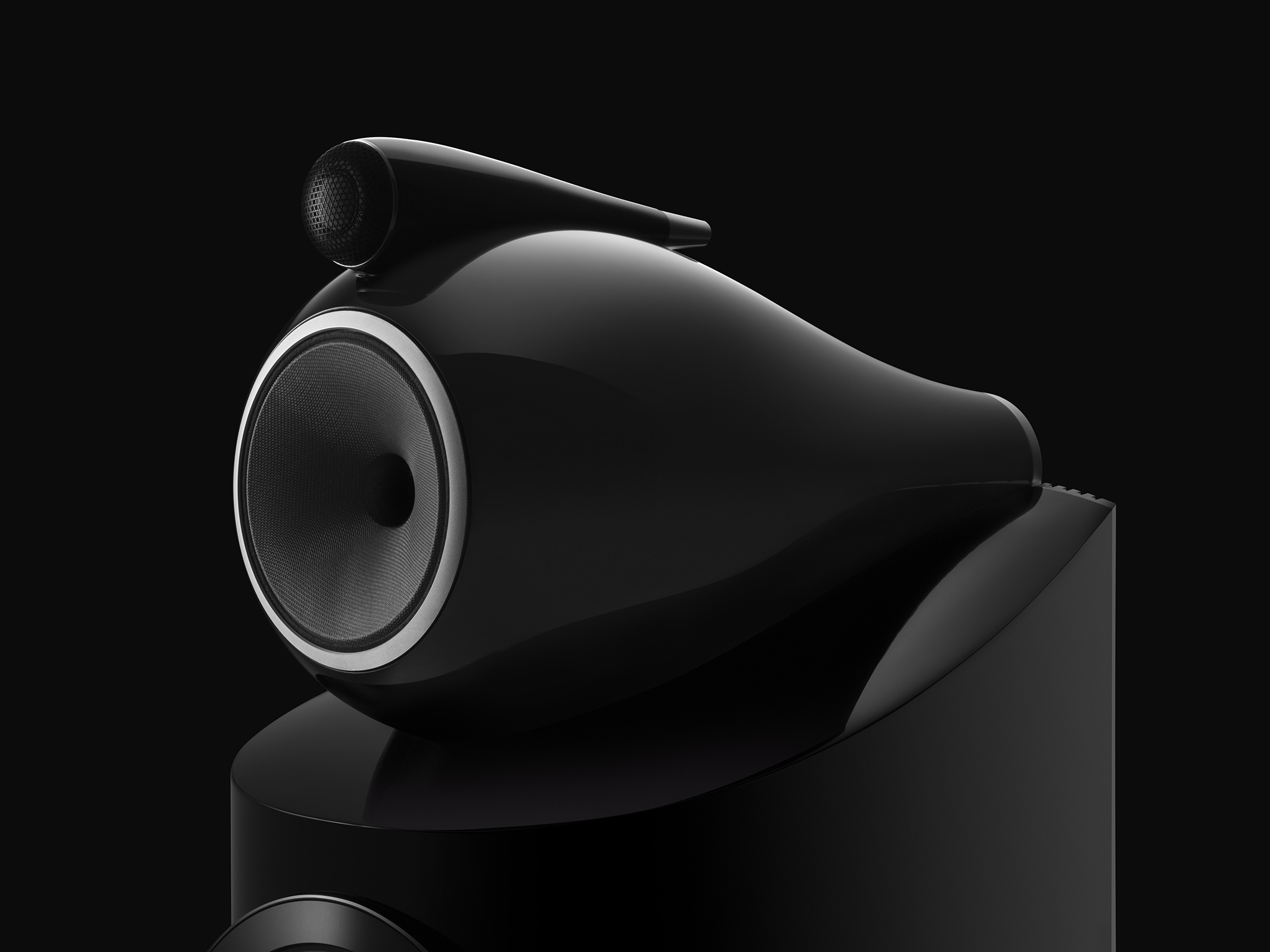
Stevie Wonder’s Superstition has always been a favourite of mine, and through the 800 D3s, that spare kick drum/cymbal intro got my blood pumping even before that great syncopated keyboard riff stabs in. The B&Ws reproduced the biting, cutting, sound of the guitar brilliantly, and when Stevie chimes in with ‘very superstitious, writing’s on the wall’ it was as if he were there in the listening room. But as if to prove that good speakers will always reveal a bad mix, You Are The Sunshine of My Life was delivered too accurately (if there’s even such a thing) as they made very obvious the weird phasing effects that go on for about the first twenty bars. One dares to say that if this track had been monitored using 800 D3s it might have ended up sounding completely different!
As I noted when I reviewed the B&W 802 D3s, the 800 D3s’ dispersion is unbelievably good, thanks to the almost flat-faced FST driver and that it’s essentially baffle-less, so there are none of the response aberrations, reflections and timing errors that occur when a midrange driver is mounted on a baffle. The result is a sound-field that was suspended in my listening room so three-dimensionally that the sonic ‘sweet spot’ was almost everywhere.
One big difference between the 802 D3 and the 800 D3 that I noted straight away was the improvement in the deep bass. I thought the 802’s bass was fabulous, but the 800 D3’s bass is better again, not just for the way it extends lower-down into the low frequencies, but also for the way seems to have a better ‘grip’, so that I ‘felt’ the bass as a physical presence in the room to a greater extent… as well as hearing it. It would thus appear that their bass power and extension are amongst the reasons the 800 D3 is able to deliver that sense of acoustic space I noted as my ‘first impression’ when listening.
But that sense of acoustic space is also helped by the 800 D3’s treble response, which is as clear and pure as I recalled from the 802 D3: very smooth and mannered, such that there’s none of the ‘tizz’ in the extreme highs that is the signature of most hard-domed tweeters, yet without missing out on any high-end musical detail, or on any ‘air’ around that detailing.
Verdict
In the world of high-end loudspeakers, manufacturers use many methods to convince consumers of the superiority of their particular acoustic creation.
Some use physical size, others use sculptural devices, while a few of them provide myriad complex adjustments to encourage ‘listener participation’.
Regrettably, an increasing number of manufacturers are rather crudely just attaching unjustifiably high price tags to inferior products in an attempt to fool consumers into thinking that because their products are expensive, they must somehow be ‘better’ simply because they cost more.
B&W has employed an entirely different selling strategy with the 800 D3. It has created a loudspeaker whose sound speaks for itself. Audition a pair and they’ll speak to you. They’ll say: ‘We’re the best speakers you’ve ever heard!’
And in another bonus for Australian buyers, the fact that B&W recently set up its own wholly-owned subsidiary in Australia means that it now doesn’t have to pay another company to distribute its products, which has in turn resulted in price reductions across the entire range, and most particularly in the retail price of the 800 D3s, which has dropped significantly.
The B&W 800 D3s are still expensive, of course, but at least—like that classic television advertisement—you’ll be able to tell your significant other how much you’ve saved by waiting.
Labratory results
Newport Test Labs measured the frequency response of the B&W 800 D3 as extending from 28Hz to 28kHz ±3dB, which is an outstanding result and very close to B&W’s spec of 15Hz to 28kHz ±3dB. This response is shown in Graph 1, where the trace below 1kHz is the averaged result of nine individual frequency sweeps measured at three metres using a pink noise test stimulus with the central grid point on-axis with the tweeter and with the capture unsmoothed. This response has been spliced using post-processing to the gated high-frequency response (measured at a single point at one metre directly on-axis with the B&W 800 D3’s tweeter while its protective cover was in place).
You can see that the ±3dB variation is caused by roll-off in the low frequencies (below 30Hz). If we restrict the measurement to within the audio band, the trace shows that Newport Test Labs measured the frequency response of the B&W 800 D3 as 20Hz – 20kHz ±2.5dB… obviously an exceptionally flat and linear response.
Note, too, that the response is balanced across the audio spectrum, with no ‘tilt’ that would tend to make the speaker sound a little bassy or a little bright. The response is also very uniform, without any real peaks or dips other than one at 9kHz… and this is at such a high frequency, so small and covers such a narrow bandwidth that I do not believe it would be audible.
Graph 2 shows the low-frequency response of the B&W 800 D3 measured by Newport Test Labs using a near-field measurement technique that simulates the result that would be obtained in an anechoic chamber. The bass drivers’ response (green trace) is extraordinarily extended, stretching all the way down to 50Hz before starting to roll off, which is around an octave further than most bass drivers manage. And where the bass drivers do start rolling off, you can see the output of the port (the red trace) coming into play with the port’s output peaking at around 27Hz. The output of the port rolls off smoothly either side of this peak, which is good, and although there’s some ‘leakage’ of high frequencies through the port at around 400Hz and around 1kHz, it’s so low in level that it would not be audible. The midrange driver’s response is also superbly flat and linear.
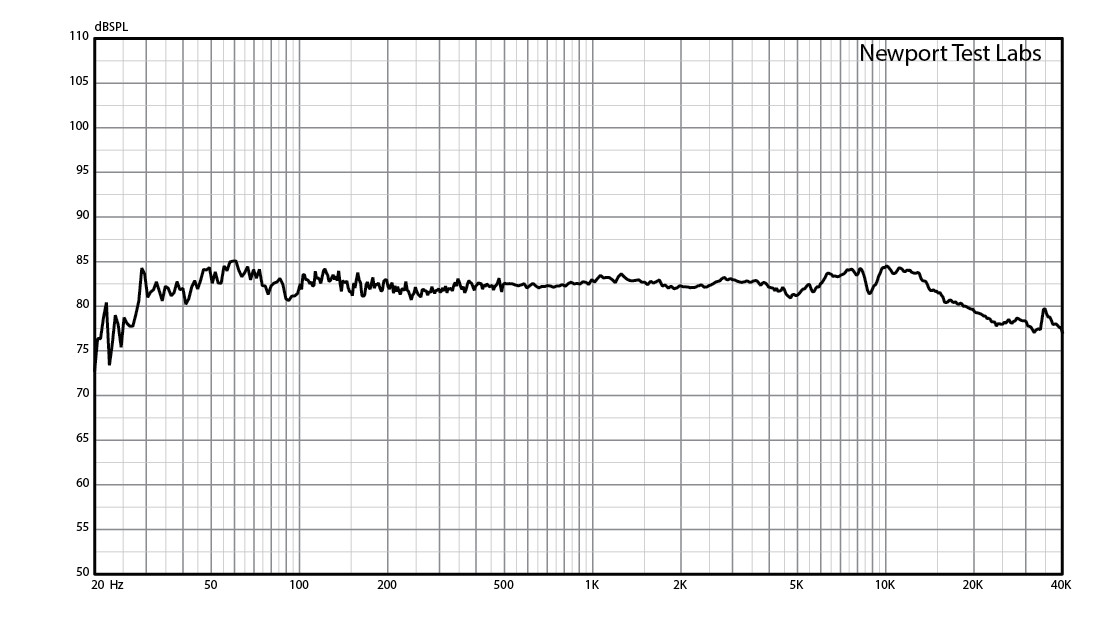
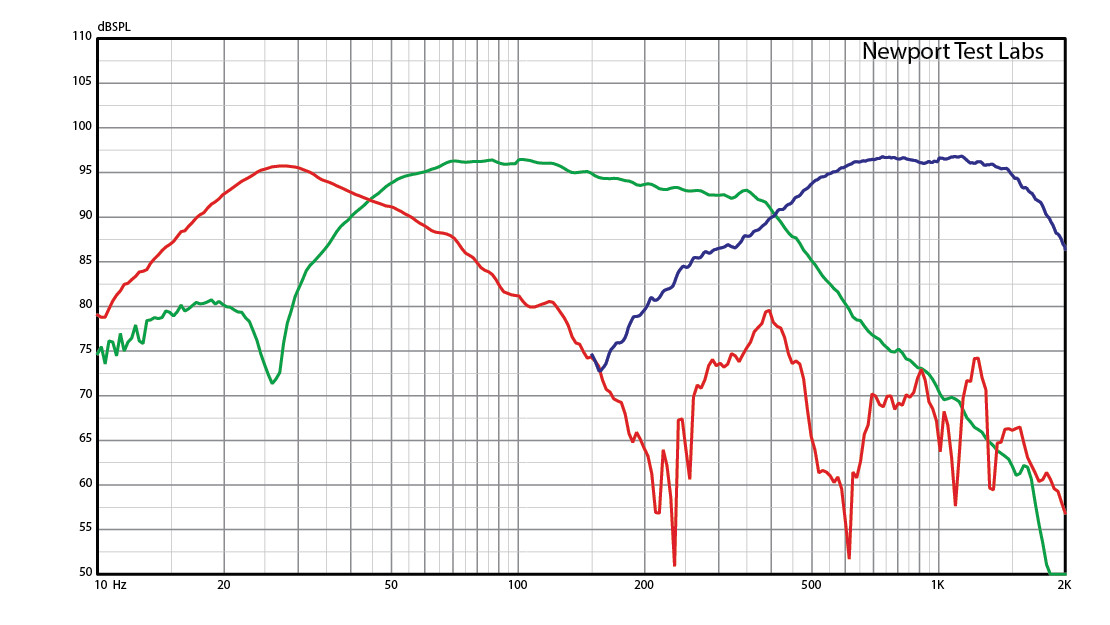
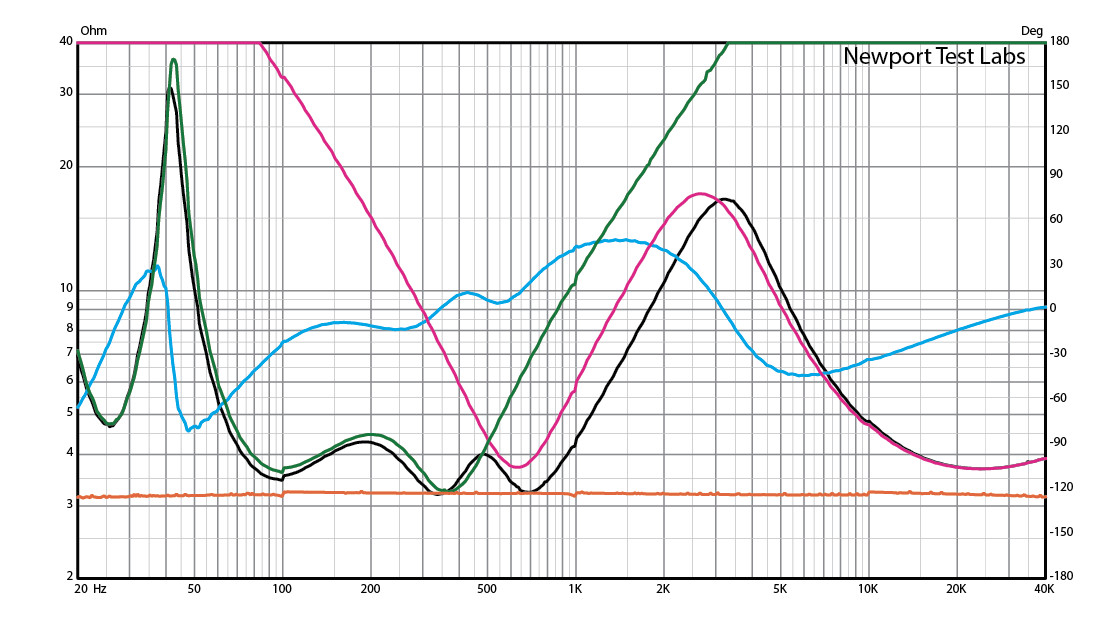
The impedance of the B&W 800 D3 drops to 3Ω at 350Hz and 700Hz—a low impedance that B&W acknowledges in its specification. However, whereas B&W specs the ‘nominal’ impedance of the 800 D3 at 8Ω, you can see from the trace on Graph 3 that the impedance is lower than 8Ω between 52Hz and 1.5kHz (which covers almost all the fundamentals frequencies that occur in music) and then also below 8Ω between 6kHz and 40kHz.
This would suggest to me that you’d be better off considering the B&W 800 D3 as being nominally a 4Ω design… or perhaps 6Ω. The very low impedance at high frequencies means that if you use a Class-D amplifier, it will have to be one of the newer designs that’s tolerant of such loads. And since the impedance stays mostly below 4Ω from 70Hz to 900Hz, any amplifier you use will need to have a high output current capability. The minima in the trace at 25Hz suggests that B&W is being a bit optimistic with its claim for extension to 15Hz. The phase angle (blue trace) swings a little more than I am used to seeing, but it’s mostly contained within ±60°, so it won’t trouble any good-quality amplifier. The traces showing the low-pass and high-pass sections of the 800 D3 (the pink and green traces) show that the electrical crossover is at around 500Hz.
Newport Test Labs measured the sensitivity of the B&W 800 D3 as 89.5dBSPL at one metre, for a 2.83Veq input, under its standard test protocol, a figure that is only very slightly lower than B&W’s specification of 90dBSPL… and so close to it that the difference is inconsequential. It also means that the B&W 800 D3 is remarkably efficient for such a large speaker with such a flat and extended frequency response and further means it will perform well even with low-powered amplifiers… though I would not recommend using any amplifier with a power output of lower than 100-watts per channel, just to ensure you can make the most of the 800 D3’s dynamic capabilities when playing at higher listening levels.
The B&W 800 D3 returned a flatter, more extended frequency response than any other non-DSP corrected loudspeaker Newport Test Labs has ever measured, and did so whilst maintaining high efficiency. It’s a design that B&W’s engineers are no doubt very proud of… and if I were on B&W’s design team, I would be very proud too.
Australian Hi-Fi is one of What Hi-Fi?’s sister titles from Down Under and Australia’s longest-running and most successful hi-fi magazines, having been in continuous publication since 1969. Now edited by What Hi-Fi?'s Becky Roberts, every issue is packed with authoritative reviews of hi-fi equipment ranging from portables to state-of-the-art audiophile systems (and everything in between), information on new product launches, and ‘how-to’ articles to help you get the best quality sound for your home. Click here for more information about Australian Hi-Fi, including links to buy individual digital editions and details on how best to subscribe.
